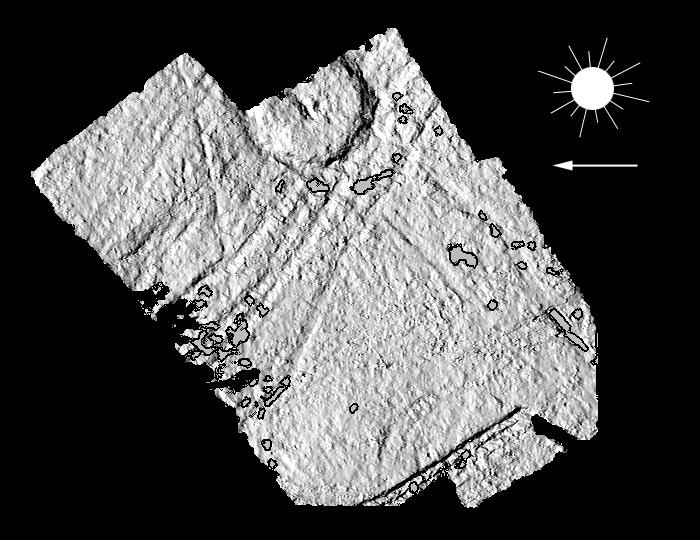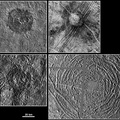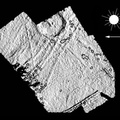
WIKIARCHIVES.SPACE
The Human Spaceflight Archive

This shaded relief highlights relative elevations around Cilix crater on Jupiter's moon, Europa. North is to the top of the picture which was created by shading a model of the surface with the brightnesses resulting from artificial illumination. The sun illumination was artificially computed to be shining from the right (east) while 60 degrees above the horizon. Several images of Cilix, obtained at varying viewing geometries are combined to calculate a three dimensional surface model.
Information
- Taken in
- Author
- NASA/JPL/DLR
- Description
-
This shaded relief highlights relative elevations around Cilix crater on Jupiter's moon, Europa. North is to the top of the picture which was created by shading a model of the surface with the brightnesses resulting from artificial illumination. The sun illumination was artificially computed to be shining from the right (east) while 60 degrees above the horizon. Several images of Cilix, obtained at varying viewing geometries are combined to calculate a three dimensional surface model.
The Cilix impact structure is situated at about 180 degrees longitude near Europa's equator. The crater is 20 kilometers (12 miles) across, with rims as high as 500 meters (545 yards). The massif near the crater center is as high as the rim. While the western portion of the rim shows pronounced slumping of the crater walls, the opposite rim does not. The crater floor appears to have rebounded into a domed shape. Linear ridges in the shaded relief may be double ridges which are not fully resolved by the topographic model.
The stereo perspective combines images obtained from different camera positions. Such a three dimensional model is similar to the three dimensional scenes our brains construct from images seen by the left and right eyes. The figure uses uniformly grey patches, outlined in black, to indicate locations where gaps in the data prevented three dimensional modelling. The best resolution is 65 meters per picture element. The stereo images were taken on May 31st, 1998 at ranges of 12,300 kilometers (7,650 miles) and 4,500 kilometers (2,800 miles) by the Solid State Imaging (SSI) system on NASA's Galileo spacecraft.
The Jet Propulsion Laboratory, Pasadena, CA manages the Galileo mission for NASA's Office of Space Science, Washington, DC.
- Created on
- Monday 18 January 1999
- Albums
- US SPACE PROGRAM / PROBES / JUPITER / GALILEO / Mission Photos (Edited) / JUPITER / EUROPA
- Source link
- https://photojournal.jpl.nasa.gov
- Visits
- 13
- Rating score
- no rate
- Rate this photo
- License
- Public Domain
- Modified by WikiArchives
- No (original)
- Downloads
- 1
Powered by Piwigo



